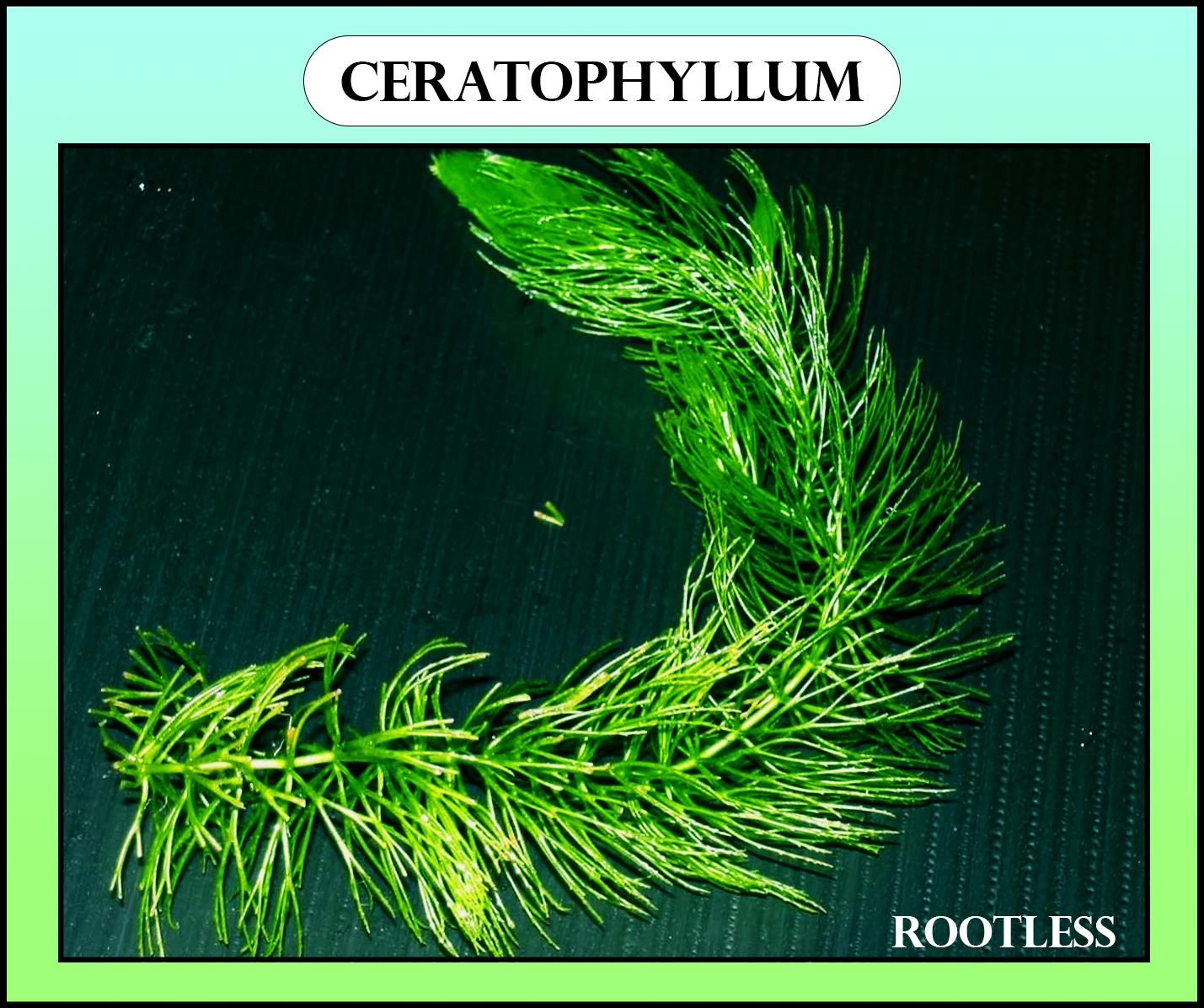Answer
394.5k+ views
Hint: They are aquatic plants having spiny fruits and are named after its structure called hornworts, they are different in habit and structure from the other plants living in the same habitat due to the absence of roots.
Complete answer:
The plants in the options are all aquatic plants. They are hydrophytes found in watery conditions that may be submerged or floating. In the Ceratophyllum plant, the roots are absent from the start of the embryonic stage.
Additional Information:
-The Ceratophyllum is commonly called hornworts or coontails.
-They are submerged completely inside the water and may float sometimes.
-The characteristic feature of the plant is the presence of the forked leaves which are hard Tasmanian Weed Management Act 1999 and stiff.
-Roots are not present in the plants but sometimes the leaves are modified into a root-like appearance.
-These modified leaves act as an anchor, which attaches the plants to the bottom.
-The plants are unisexual with male and female parts on the same flowers.
-They are sometimes placed in a freshwater aquatic habitat due to its appearance and oxygen availability.
-Under the Tasmanian Weed Management Act 1999, the Ceratophyllum was declared as a weed in Tasmania, Australia.
-It secretes certain harmful chemical substances that do not allow other plants to grow in that region.

So, the correct answer is ‘Ceratophyllum’.
Note: Sagittaria is commonly known as an arrowhead having an aquatic mud habitat. The plants are completely submerged in water with roots attaching to the bottom. Nymphaea is commonly called the water lilies, they are rhizomatous aquatic plants and sometimes may have stolons for attachment. They float on water. Vallisneria is commonly called eelgrass. They are submerged aquatic plants with runners and roots at the base. From the base of the roots, a group of leaves arises.
Complete answer:
The plants in the options are all aquatic plants. They are hydrophytes found in watery conditions that may be submerged or floating. In the Ceratophyllum plant, the roots are absent from the start of the embryonic stage.
Additional Information:
-The Ceratophyllum is commonly called hornworts or coontails.
-They are submerged completely inside the water and may float sometimes.
-The characteristic feature of the plant is the presence of the forked leaves which are hard Tasmanian Weed Management Act 1999 and stiff.
-Roots are not present in the plants but sometimes the leaves are modified into a root-like appearance.
-These modified leaves act as an anchor, which attaches the plants to the bottom.
-The plants are unisexual with male and female parts on the same flowers.
-They are sometimes placed in a freshwater aquatic habitat due to its appearance and oxygen availability.
-Under the Tasmanian Weed Management Act 1999, the Ceratophyllum was declared as a weed in Tasmania, Australia.
-It secretes certain harmful chemical substances that do not allow other plants to grow in that region.

So, the correct answer is ‘Ceratophyllum’.
Note: Sagittaria is commonly known as an arrowhead having an aquatic mud habitat. The plants are completely submerged in water with roots attaching to the bottom. Nymphaea is commonly called the water lilies, they are rhizomatous aquatic plants and sometimes may have stolons for attachment. They float on water. Vallisneria is commonly called eelgrass. They are submerged aquatic plants with runners and roots at the base. From the base of the roots, a group of leaves arises.
Recently Updated Pages
How do you arrange NH4 + BF3 H2O C2H2 in increasing class 11 chemistry CBSE

Is H mCT and q mCT the same thing If so which is more class 11 chemistry CBSE

What are the possible quantum number for the last outermost class 11 chemistry CBSE

Is C2 paramagnetic or diamagnetic class 11 chemistry CBSE

What happens when entropy reaches maximum class 11 chemistry JEE_Main

Calculate the volume occupied by 88 gram of CO2 at class 11 chemistry CBSE

Trending doubts
Difference between Prokaryotic cell and Eukaryotic class 11 biology CBSE

Difference Between Plant Cell and Animal Cell

Select the word that is correctly spelled a Twelveth class 10 english CBSE

Fill the blanks with the suitable prepositions 1 The class 9 english CBSE

What is the z value for a 90 95 and 99 percent confidence class 11 maths CBSE

Give 10 examples for herbs , shrubs , climbers , creepers

What organs are located on the left side of your body class 11 biology CBSE

What is BLO What is the full form of BLO class 8 social science CBSE

Change the following sentences into negative and interrogative class 10 english CBSE



